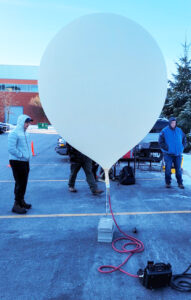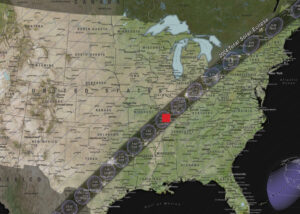Student balloon team focuses on solar eclipse opportunity to advance hands-on discoveries
Author: Macie Stump
Author: Macie Stump

The total solar eclipse that will occur over the United States April 8 is an especially rare occurrence and won’t happen again until 2044. Among the many prepared to take advantage of this opportunity is the Iowa State University Make to Innovate (M:2:I) HABET (High-Altitude Balloon Experiments in Technology) team, which is supported in part by the Iowa Space Grant Consortium. They will participate in studying the eclipse as part of the National Eclipse Balloon Project, led by the Montana Space Grant Consortium.
The team will travel to Southern Illinois University, in the path of totality for the eclipse, to collect data. Members have developed sophisticated tracking technology to follow the balloon’s position using multiple antennas and radio dishes. It will soar into the path of the eclipse measuring things like changes in humidity, air pressure and temperature. HABET also launched a balloon in New Mexico to study the annular eclipse that occurred in October, 2023.

HABET credits the visibility and reputation of the M:2:I program as a tremendous motivator for their work. Project Manager Brody Echer said that through the program they have gained a better understanding on how to approach different scenarios, which is a primary reason why so many students flock to M:2:I.
Learn more about the current eclipse plans and about the HABET program in general in a story published by University News Service April 3.
For more information and links related to the April 8 solar eclipse, see the Iowa Space Grant Consortium Website.